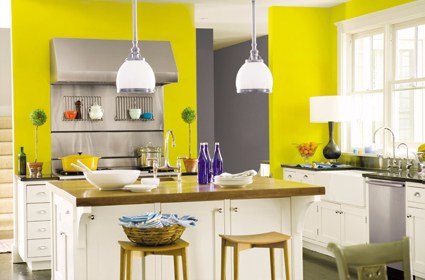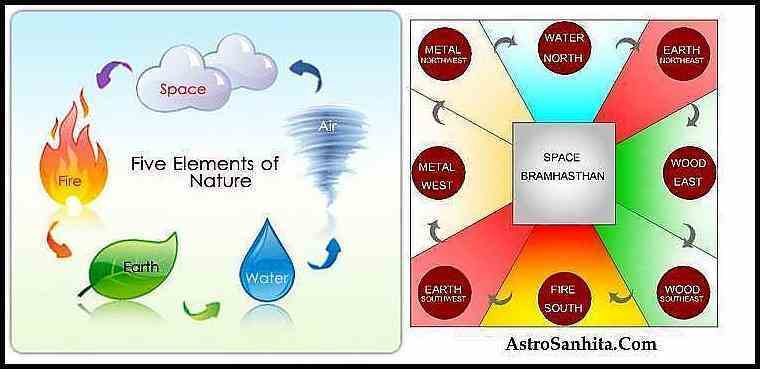Transform Your Home with Vastu Shastra: Tips, Mandala & History: Whenever you think of constructing a house, you must be thinking about what is Vastu and how to build a house according to it. So I will discuss all your doubts related to Vastu in depth in this Article. So read this article completely so that all your doubts related to Vastu are cleared. Today I am going to tell you all about it.
Now before moving ahead, let’s know about the topics discussed in this Article. Like,
- What is Vastu and Vastu Kala?
- Where is the origin of Vastu Shastra,
- 5 basic elements of nature,
- Direction and their use in Vastu,
- Vastu Purush,
- House Facing,
- Direction and Corners of the plot,
- Position of 5 elements according to Direction,
- God’s residence in different parts of the plot,
- What is the impact of Vastu Shastra on human life
- What all things we have to design in our house while following Vastu Shastra
- Like our washrooms, bedrooms, kitchen, and water tank, where all we should place them
At the end, I will give you some advice on how to go about designing a house plan based on Vastu.
Vastu is an ancient Indian practice which uses the five elements of nature (water, fire, air, earth, and sky or ether) in accordance with directions to create a peaceful and harmonious environment in a home. Each of these elements helps to create the perfect living space and to ensure the health, wealth, and prosperity of the house. To design the house, we need to consider the four main directions, North-South and East-West, but also the four sub-directions and four sub-sub-directions, resulting in a total of 16 directions. For beginners, however, I will keep it simple.
The position of these 4 directions is like this,
- the corner between North and West is called Vaiveyakon,
- the corner between North and East is called Isankon,
- the corner between South and West is called Niratyakon,
- and the corner between South and East is called Agnayakon.
Enroll Online Astrology Course
What Is Vastu Shastra and its Origin / History – Including As Per Puranas
Before knowing about Vastu Shastra, let’s know what is Vastu Shastra. Many American scholars have described Vastu Shastra as a science of architecture. That is, all the architecture studies we are doing today, the science behind it comes from Vastu Shastra. You will be surprised to know that in that era, when it was written about Vastu Shastra, it was not only said that according to Vastu Shastra, our bedrooms, washrooms, location, and direction, what is the soil type, what is the direction of the wind, what is the impact of sunlight on the house, how a building or an architecture monument is beautified, all this was told in that era in Vastu Shastra.
Now majorly, the studies that have come, it has been found that the first author of Vastu Shastra is Mamuni Mayan, who was one of the five sons of Vishwakarma in that era. He has written the whole of Vastu Shastra, it has been written in the texts.
Mamuni Mayan was considered a sage at that time, some people considered him a scientist. Now in different studies, his role has been defined differently. You will be surprised to know that Mamuni Mayan designed the monuments, buildings, and houses of Dwarka.
This is why the buildings of Dwarka are considered to be very strong and are known for their stability even after thousands of years. There is one more thing that is known about Mamuni Mayan is that he was the first one who has written about the importance of the direction of the house in Vastu Shastra. He has mentioned the importance of the north and east direction and the effects of the other directions on the people who live in the house.
Mamuni Mayan’s writings are still considered to be very relevant and are an important part of modern Vastu Shastra. The principles of Vastu Shastra are still used in many parts of India to ensure that buildings are constructed in a way that brings maximum benefit to the people who live in them. This is why the buildings of Dwarka are still studied and admired even today.
Now, Let’s see who is Vastu Purush and in which direction is it positioned in our house?
To know this, you have to know about a small story written in the Puranas. According to the story, when during the battle of Bhishan between Lord Shiva and the demon Andhaka Sur, some drops of sweat from Lord Shiva’s body fell on the earth, which created a huge man who was very angry. Seeing him, all the gods were frightened and asked Lord Brahma to save them from this demon.
Then Lord Brahma said, all the gods together bury him in the earth. Then Vastu Purush asked Lord Brahma for mercy. Lord Brahma said, from today you will be known as Vastu Purush and all the gods will dwell on your body. And before the construction of any new house, Vastu worship will be done, which will give peace, health and benefit to the family. And all the pain and suffering will be destroyed.
When Vastu Purush was buried in the ground, his condition was such that the head is in the corner of North and East in Isankon, and the legs are in the corner of South and West in Niratyakon.
All Deities In The Vastu Purusha’s Body Parts
Vastu Purusha, an essential part of Vastu Shastra, is believed to house 45 Gods. Among these, Lord Brahma is said to occupy the most significant position – the brahmastan – at the center of Vastu Purusha’s body. The middle parts of the body are said to house 13 Gods, while the 32 remaining gods are located at the corners. This divine structure represents the powerful, yet balanced energies of the Hindu pantheon, and is a cornerstone of the Vastu principles.
Shiva is situated at the head and Brahma behind the navel. Parjanya and Diti have a place in both ears; Apadeva is above the throat; Ayarma and Prithwidhar are in the chest; Jaya and Aditi are in the shoulders; Apavatsa is above the heart; Savitra and Savita in the upper right arms; Rudra and Dudradas in the lower right arms; Mrityu and Mitra in the thighs; Indra and Jaya in the genital area; Agni and Roga, above the knees; Nandi, Sugreeva, Asur, Kshona, Pusha, Varun, Papa and Yakshma in the blood vessels of the legs, and Pitra in both the heels.
| Deity | Location |
|---|---|
| Shiva | Head |
| Brahma | Behind the navel |
| Parjanya | Both ears |
| Diti | Both ears |
| Apadeva | Above the throat |
| Ayarma | Chest |
| Prithwidhar | Chest |
| Jaya | Shoulders |
| Aditi | Shoulders |
| Apavatsa | Above the heart |
| Savitra | Upper right arms |
| Savita | Upper right arms |
| Rudra | Lower right arms |
| Dudradas | Lower right arms |
| Mrityu | Thighs |
| Mitra | Thighs |
| Indra | Genital area |
| Jaya | Genital area |
| Agni | Above the knees |
| Roga | Above the knees |
| Nandi | Blood vessels of the legs |
| Sugreeva | Blood vessels of the legs |
| Asur | Blood vessels of the legs |
| Kshona | Blood vessels of the legs |
| Pusha | Blood vessels of the legs |
| Varun | Blood vessels of the legs |
| Yakshma | Blood vessels of the legs |
| Pitra | Both heels |
What is Vastu Purush Mandala In Vastu Shastra
The Vastu Purush Mandala is a concept within the ancient Indian practice of Vastu Shastra. It is an abstract diagram consisting of nine squares arranged in a three-by-three grid. Each square is further divided into smaller squares, representing the nine planets and other cosmic energies. Each square is also associated with a particular deity or aspect of nature. According to Vastu Shastra, the correct placement of objects such as furniture, plants, and other items in the home or workspace can help to ensure a harmonious energy flow and bring balance and peace to one’s life. The Vastu Purush Mandala is an important symbol to consult when thinking about the placement of objects in a home or workspace.
In short or in more easier way to is: The Vastu Purush Mandala is a special drawing that helps people know where to put things in their home or workspace to make them feel happy and peaceful. It looks like a big square with nine smaller squares inside. Each small square is like a picture of a special god or something from nature. When we put things in the right place, it can help us have more peace and balance in our lives.
We need to figure out how to organize our house. To do this, we have to divide our house into 9 parts. Each part has something special that it does and is important. We also need to know which way is North, South, East, and West so we can decide where the different parts should go. To figure out which way is which, we can use a compass or look up at the sun. Once we know the directions, we can figure out the best way to organize our house.
Go to your plot and stand in the middle of it. Stand in the center of the plot and look towards the road. Place your mobile phone on your hand and the compass shows the direction of the road. Suppose, the compass shows the direction of the road to the north. In India, if you are standing in the center of UP and the direction of the road is North, then on your right-hand side, it will be East, on your left-hand side, it will be West, on your back side, it will be South. This will help you to know the directions to your house.
How to find the direction of your house?
The direction in which the gate of your house is will be the direction of your house. To find this, you stand in the center of the plot and turn your face in the direction of the sun. So the direction in which your face will be will be the east direction and your back will be the west direction towards the back. And your left hand will be in the north direction and your right hand will be in the south direction.
In this way, you can find the direction of your house. And you can also use a compass to find the direction of the house.
How To Find The Sub-Directions Of Your House?
To understand this, divide your house plot into 9 sections. The corner between North and West is Vyvyakon, the corner between North and East is Isankon, the corner between South and West is Niratyakon, and the corner between South and East is Agnyakon. At the center of these four corners is Brahmistan.
According to Vastu Shastra, how to know Which direction is better?
Mamuni Mayan Ji told us about a special place, in modern-day example that looks like an ice cream cone. It has 8 cones and a center, which is called Brahmastan. The 8 cones are like directions around our house. There are 4 cones that point straight, left, right, and back. The other 4 cones are a little bit slanted. Each of these 4 cones is made by combining two directions.
Now, let’s see which direction is preferred by Mamuni Mayan Ji. Mamuni Mayan Ji says that
- if your house is East facing, then Indradev resides on the East block of your house.
- If your house is North facing, then Kubera, who is the deity of wealth, resides on the North entrance of your house.
- If your house is West facing, then Varundev resides on the entrance of your house.
- And if your house is South facing, then Yamraj resides on the entrance of your house.
Now you must have understood why plots in South are generally 10-15% cheaper than plots in other directions. And why plots in South are given less preference. If plots are made in every direction, then they are made to be sold.
According to Vastu, it is specified in every direction that which direction should be placed. That is, where is the washroom, where is the bedroom, where is the puja hall, where is the water tank, all this has been told.
So now I will tell you one by one before you understand this figure
Think of the four corners of your house like the four corners of a box. Each corner of the box is made with one special thing. Just like the four corners of your house, each corner is made with one of the five special things. The five special things (elements) are Earth, Water, Fire, Air, and Space. Together, all these five special things make up the universe, and your house too!
- That is, our South West is Bhoomi, which is also called Prithvi Kona.
- The center of our house, which is known as Gagan, is famous for open spaces. So there is Brahmasthan, Brahmji resides there.
- The North West corner of our house is called Vayuvya Kona, i.e. Vayu.
- The South East corner of our house, which is called Agnaya Kona, is noted as Agni. And
- the North East corner of our house, which is called Ishanya Kona, is noted as Nir, i.e. water element.
Vastu Shastra also says that each corner of our house has its own importance and each corner represents a different energy. Now, let me explain to you what all we have to construct according to the four corners.
- If the entrance of your house is from the East side or North side, then you have to keep the entrance of the main gate of your house from the North East side.
- If your house is West facing, then you have to keep the entrance of your house from the North West side. And
- if your house’s entrance is from the South, then you have to keep the entrance of your house from the South East side.
The five elements and gods in the house as per Vastu Shastra
Vastu Shastra is an ancient Indian science of architecture that dates back to around 4000 BC. It is believed to bring peace, prosperity, and harmony to the home and its occupants. According to Vastu Shastra, the five elements – Earth, Water, Fire, Air, and Space – should be balanced in the house in order to achieve a harmonious environment. Each of these elements is associated with a God that should be worshipped in the home to invoke their blessings.
The five elements and gods should be balanced in the house to ensure the occupants have peace, prosperity, and harmony. The house should be placed in such a way that the five elements are in balance, and the gods should be invoked through regular prayers. This will ensure that the home is blessed with wealth, courage, happiness, freshness, and creativity, making it a haven of peace and prosperity.
It means, we will know which place in this house is the residence of which deity.
- In Vyvyakon, Vasudev resides.
- In the north direction, Kuber resides.
- In Isankon, Shiv resides.
- In the west direction, Varun
- In Brahmistan, Brahma resides.
- In the east direction, Indra resides.
- In Niratyakon, Pitra resides.
- In the south direction, Yam resides.
- And in Agnyakon, Agnidev, and Dhan Lakshmi resides.
Because in the south direction, Yam resides. And if the facing of our house is also in the south direction, then we cannot make the main gate of our house in the middle part of the south direction. Because here is the residence of Yamdev, then the gate made here will also be considered as the door of Yam. And it can be the cause of the death of the head of the house.
So we will not make the main gate of our house in the middle part of the south, but will make it in the Agnyakon, that is, in the south-east corner. This is the position of the deity.
So, now it’s the time for Some Vastu tips for design house plan
Now, let’s see what all we have to construct. Suppose, you have to construct the bedroom of your house. So, you can easily see that the Prithviya Kona, i.e. our Nairatya Kona is in the South West direction. So, we have to construct the bedroom of our house’s Swami, i.e. the earning member in the South West corner. Apart from that, if you ask for a second preference, where should we construct the bedroom of our house? It should be constructed in the North East corner.
Now, let’s talk about the kitchen. You can easily see that the Agni Kona of our house is in the South East direction. So, if you have to construct anything related to Agni, it should be in the South East direction. So, we should construct the kitchen of our house in the South East direction.
Now, let’s talk about the washroom. You can see that the Vaivya Kona of our house is in the North West direction. So, if you construct the washroom of your house in the Vaivya Kona, it will be better. The air flow in the North West corner is very fast, so the smell will be removed quickly.
Apart from that, let’s talk about the dining portion or hall of our house. You must have seen many years old houses, in which basil plant was planted in the middle and nothing was constructed. The roof was not there, the sky was always open. But if we talk about today’s reality, it is not possible that you do not construct anything in that place. Apart from that, it is not possible that we do not put a roof in the center of our house. Because, dust, sand and storm will come to our house again and again and it will be very difficult for us to stay at home. So, you can use that dining portion or hall.
Apart from that, let’s talk about the underwater ground tank or borewell of our house. You can construct it in the North East corner because it is very good for water. Apart from that, let’s talk about the septic tank of our house. As I told you, the Vaivya Kona of our house is in the North West corner. So, you have to construct the septic tank there. There are some things that Vastu tells us apart from this.
We also pay attention to those things. First of all, you can never construct the entrance gate of the house in the center. You can construct it in 4-5 inches left or 4-5 inches right but not in the center.
Apart from this, Vastu tells us about the stairs that our stairs should go North to South. That means, our stairs should not be in the East or West direction. That means, we will go up while climbing from North to South and we will come down while going down from South to North.
Apart from this, Vastu also tells us that when we sit on the seats in the toilets, we face either North or South. We cannot face East or West. That means, we cannot face the Sun God sitting on that seat. And yes, this is very important, you cannot keep the gate of your kitchen and toilet opposite to each other. That means, the gate of the kitchen cannot be facing the gate of the toilet and the gate of the toilet cannot be facing the gate of the kitchen.
Apart from this, you should keep your vault or wardrobe in the North direction. That means, you should keep it in the North block of your house. See, North block is the place of Kuber Ji. So, if you keep your vault or wardrobe there, it will have a very good impact. Your wealth will keep increasing.
| Room | Best Direction | Good Direction | Worse Direction | Deity of Main Direction |
|---|---|---|---|---|
| Bedroom | South West | North East | South East, North West | Gandharva, Niruthi |
| Kitchen | South East | South | South West | Agni |
| Washroom | West-North-West | South-South-West | South West, North East | Vayu |
| Dining Hall | Roofed area | North, East, West | South, South West | Annapurna |
| Underground Tank or Borewell | North East | East, North | South West, South | Varuna |
| Septic Tank | North West | West-North-West | North East, East | Rudra |
| Entrance Gate | Not in the center | North | South | Ganapati |
| Stairs | North to South | East to West | South To North | Kubera |
| Toilet | South-South-West | West-North-West | North, North East | Mrityu |
| Kitchen and Toilet Gate | Not opposite to each other | |||
| Vault or Wardrobe | North block of the house | South to North door opens | East, West | Kubera |
Now, I have told you all the positioning.
Vastu Shastra, as told in the scriptures and holy books, is an ancient Indian system of architecture and design which dates back thousands of years. It is of utmost importance to consider Vastu when constructing a new house, as it takes into account the direction of the wind, the importance of sun rays, and other elements of nature, for the best possible outcomes in life. Vastu is not just about the financial effects, but is also about creating a balance between the positive and negative energies of a building. Therefore, when building a new house, Vastu should be used to ensure the best possible results.
There some advanced rules of Vastu also, will discuss in my future articles.
Enroll Online Astrology Course

Writer, Astrologer, Numerologist, Palmist, Vastu Expert, & The Teacher of Occult Subjects Shankar Bhattacharjee, a respected & “well known” name in the Vedic Astrology field. He was born in a traditional Brahmin family in India – West Bengal – near Kolkata, “The City Of Joy”, one of India’s major cities.
Experience: More than 15 Years.
Specialization: Astrologer Shankar Bhattacharjee is specialized in Predicting the Future through Vedic Parashari & Nadi Astrology, Numerology, Palmistry, Vastu & the ancient Horary System.
WhatsApp: +91 9051357099 (not for a free consultation)











